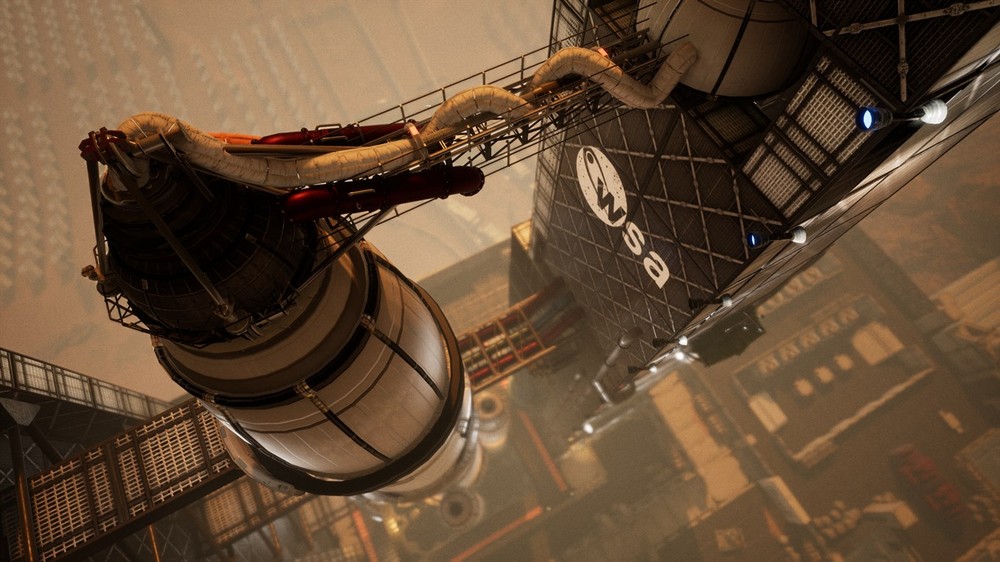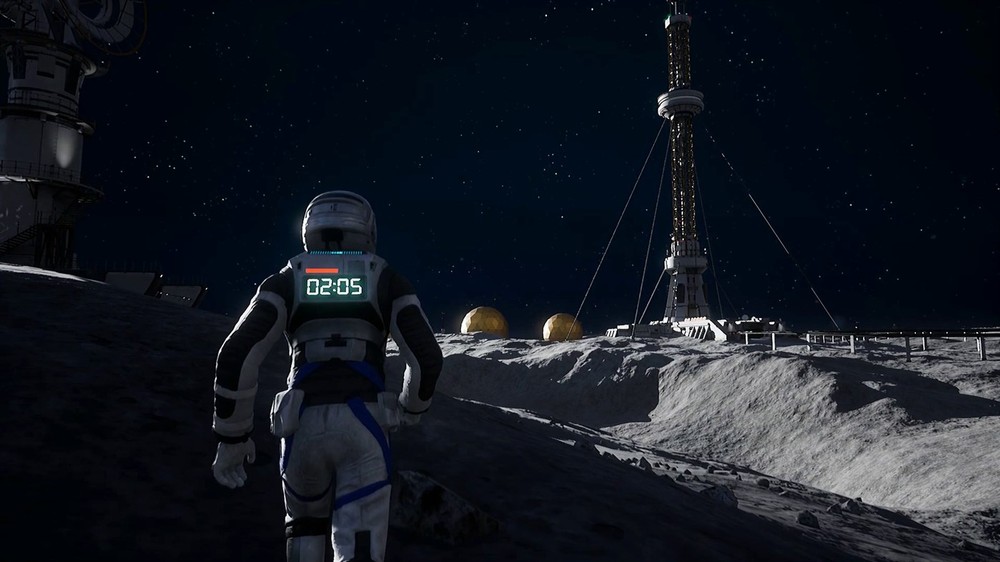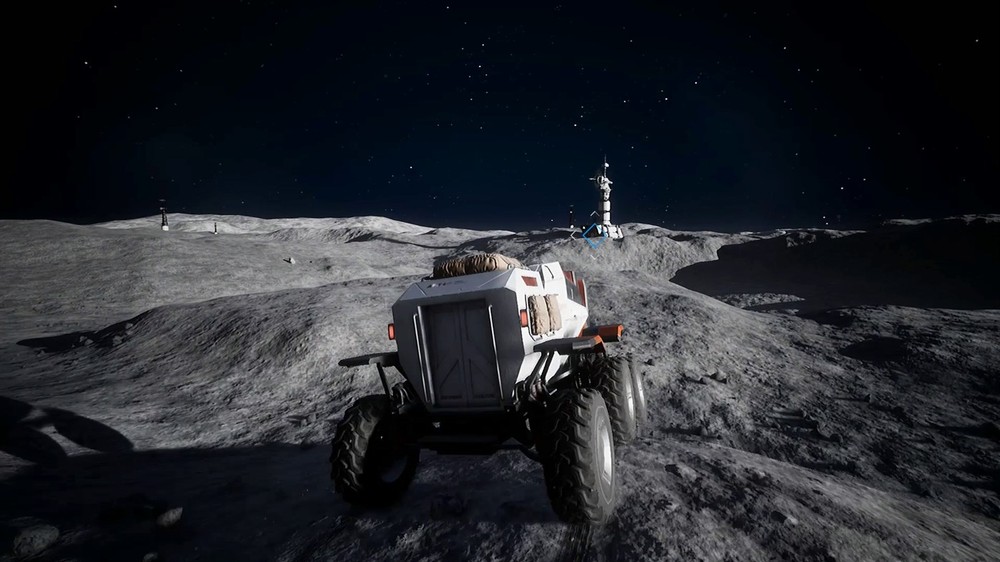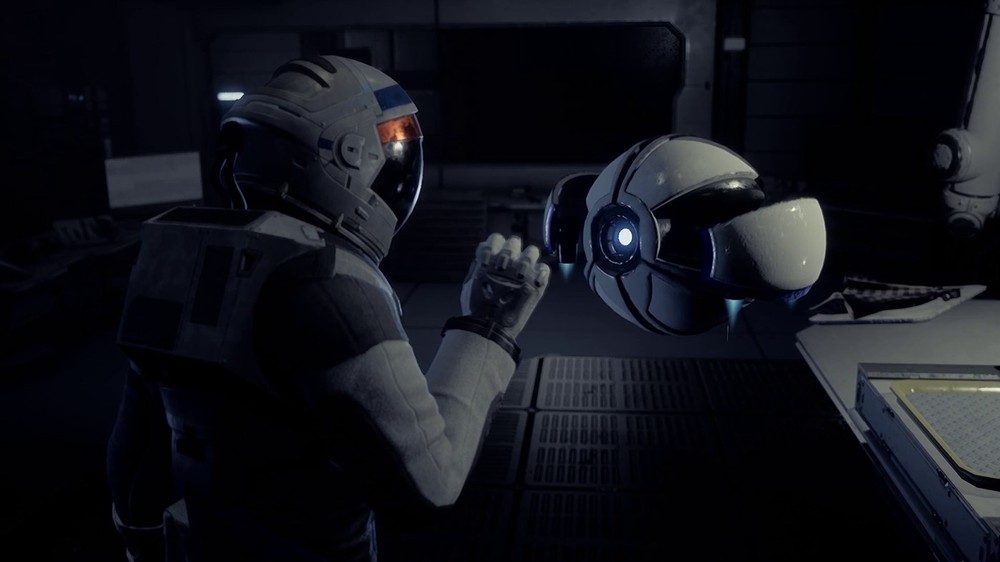Deliver us the Moon is a game that I’ve had my eye on for a little while now. A Sci-Fi mystery is always up my alley, and so I’ve tried to keep an eye on it without finding out too much, in an attempt to keep the secrets hidden and the mystery alive. Developed by KeokeN Interactive, Deliver us the Moon originally released on PC in 2018, but has now found its way to consoles, including Xbox One.
Deliver us the Moon is set in a (depressingly realistic) future where Earth’s natural resources have been depleted, and humanity’s only source of energy is Helium-3, mined on the Moon and beamed to Earth via a series of bases and space stations. However, five years before the game takes place, this signal is suddenly shut off, leaving the Earth without a source of energy and the human race seemingly doomed. In one final attempt to save the planet, your character opts to travel to the Moon, investigate what happened and restore the supply of energy.
 Deliver us the Moon has too much player interactivity to be labelled as a walking simulator, but it feels like it has familiar roots. There is plenty of navigational investigation, wandering around various locations and having story delivered through text and audio logs, and there isn’t any real combat to speak of. However, there are a number of timed sequences and a pervasive sense of urgency that brings a feeling of desperation to proceedings, especially when you can see your oxygen tanks depleting and you’re still some distance from the nearest airlock. This is a game that wants you to feel like you’re wearing the spacesuit yourself, and the fact that your viewpoint switches from third to first-person at various critical points only adds to the sense of ownership that you have over an admittedly linear story.
Deliver us the Moon has too much player interactivity to be labelled as a walking simulator, but it feels like it has familiar roots. There is plenty of navigational investigation, wandering around various locations and having story delivered through text and audio logs, and there isn’t any real combat to speak of. However, there are a number of timed sequences and a pervasive sense of urgency that brings a feeling of desperation to proceedings, especially when you can see your oxygen tanks depleting and you’re still some distance from the nearest airlock. This is a game that wants you to feel like you’re wearing the spacesuit yourself, and the fact that your viewpoint switches from third to first-person at various critical points only adds to the sense of ownership that you have over an admittedly linear story.
One excellent early example of this is when you’re given the job of launching your own rocket to the Moon, tasked with going through a series of pre-flight checks and making sure that the correct procedures are followed in the correct order. This is made more difficult by the fact that you’re pressed for time due to an approaching dust storm, meaning that your eyes are flicking back and forth from the instruction page to the instruments, all the while keeping an eye on the clock. One of Deliver us the Moon’s greatest strengths is that it allows the player to play an active role in sequences that other games would present as a cutscene, and while it’s unfortunate that this eases off later in the game in favor of more generic activities, the mood is set early on and does a good job of making you feel invested in both the character and the story.
 While later chapters might feel a little more familiar in terms of what you’ve seen in other games, Deliver us the Moon does well to constantly deliver new experiences, and it’s not often that you go back to doing something that you’ve done before. Each chapter feels unique, from the aforementioned rocket launch sequence to a section in zero-gravity, and even once you get to the Moon you’ll play through areas that require you to be stealthy, driving sections and sequences that resemble a platformer. Though Deliver us the Moon isn’t particularly fast paced for the majority of the experience, the fact that you’re constantly doing new things makes the 5-6 hour runtime fly by, and I found that I was always intrigued by what might be around the next corner.
While later chapters might feel a little more familiar in terms of what you’ve seen in other games, Deliver us the Moon does well to constantly deliver new experiences, and it’s not often that you go back to doing something that you’ve done before. Each chapter feels unique, from the aforementioned rocket launch sequence to a section in zero-gravity, and even once you get to the Moon you’ll play through areas that require you to be stealthy, driving sections and sequences that resemble a platformer. Though Deliver us the Moon isn’t particularly fast paced for the majority of the experience, the fact that you’re constantly doing new things makes the 5-6 hour runtime fly by, and I found that I was always intrigued by what might be around the next corner.
Without trying to get too much into spoilers, all is not what it seems on the Moon, and you’ll spend a fair amount of your time piecing together what exactly happened and why. You’ll do this by uncovering audio logs, messages between crew members and by watching holographic representations of past events, and all of these sources come together to deliver an intriguing narrative experience that mostly pays off by the end of the game. I did find that some of the voice-acting had an air of amateur dramatics about it, and this led to some of the scenes feeling less than believable, but for the most part I was wrapped up in the story and interested in seeing where it went, even if I was able to guess a couple of the major twists fairly early on.
 I played Deliver us the Moon on the Xbox One X, and though it does come with enhancements for this particular console, I preferred the experience of playing at a 1080p/60fps setting as it seemed to flow more smoothly. Despite this, there were sequences of noticeable slowdown, particularly towards the end of the game, and I found that this started to impact the gameplay, especially when I was being asked to jump between platforms, as I was unable to both judge the distance accurately and execute my jumps with the necessary precision. As well, there was one sequence where my robot companion got stuck outside of the game world, requiring a checkpoint restart. Overall, Deliver us the Moon offered a fairly solid technical performance, but these two issues were prominent enough to be worthy of note.
I played Deliver us the Moon on the Xbox One X, and though it does come with enhancements for this particular console, I preferred the experience of playing at a 1080p/60fps setting as it seemed to flow more smoothly. Despite this, there were sequences of noticeable slowdown, particularly towards the end of the game, and I found that this started to impact the gameplay, especially when I was being asked to jump between platforms, as I was unable to both judge the distance accurately and execute my jumps with the necessary precision. As well, there was one sequence where my robot companion got stuck outside of the game world, requiring a checkpoint restart. Overall, Deliver us the Moon offered a fairly solid technical performance, but these two issues were prominent enough to be worthy of note.
By the time I reached the end of Deliver us the Moon, it felt narratively appropriate for the story to end, but I have to admit that I was still a little sad that the experience was over. This wasn’t because I didn’t feel like I had been given enough, but more because I had so enjoyed the switching of mechanics and the delivery of the story that I could happily have played for a few more hours. While it isn’t perfect, Deliver us the Moon is an excellent example of how to deliver a story through the medium of videogames, and I’m excited to see where KeokeN Interactive go next. If you’re at all interested in storytelling in games, Deliver us the Moon is well worth your time.














